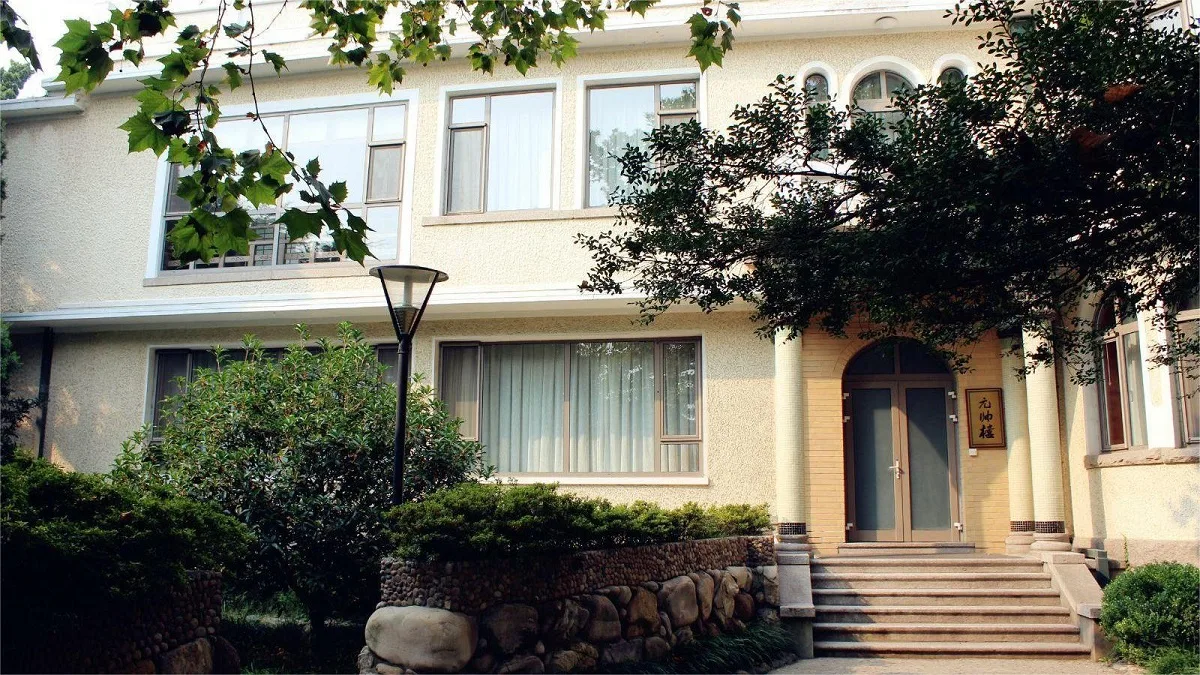The Marshal House (元帅楼), also known as the Marshal Villa, located in the Badaguan Scenic Area of Qingdao, is a two-story Japanese-style villa with a rich historical background intertwined with modern Chinese history. The house is set within a beautiful garden featuring rockeries, a small lake, bamboo groves, and lush green trees, creating a serene and elegant ambiance. The villa’s history reflects the complex colonial past of Qingdao, which saw influences from Germany and Japan.
During the period of German occupation, Qingdao saw the construction of many buildings in the German architectural style. However, during World War I, Japan seized Qingdao from Germany and retained control of the city post-war, leaving behind their architectural marks, including the Marshal House.
Table of Contents
- Location and Transportation
- Significance of the Name
- Architectural Features
- Accessibility and Preservation
- Other Attractions in Badaguan Scenic Area
Location and Transportation
The Marshal House is located at 17 Shanhaiguan Road, Shinan District, Qingdao City, Shandong Province. To get there, you can take bus 219 Loop Line or 468 Loop Line, get off at Zhengyangguan Road Huiyuan Road Stop (正阳关路汇泉路站), and walk about 350 meters to the south.
Significance of the Name
The name “Marshal House” derives from the fact that six of the ten marshals of the People’s Republic of China stayed here at different times. These prominent military leaders included Xu Xiangqian, Luo Ronghuan, Peng Dehuai, Liu Bocheng, He Long, and Ye Jianying.
- Xu Xiangqian stayed at the Marshal House for over a month shortly after the liberation of Qingdao in 1949, recuperating due to health issues.
- Luo Ronghuan revisited Qingdao, where he had studied at Qingdao University, staying at the house from July to September 1951.
- Helong also stayed here for a short while after Luo Ronghuan.
- Peng Dehuai spent time here from April to June 1954, following the victory in the Korean War, using the opportunity to rest and inspect the naval forces.
- Liu Bocheng also came for recuperation in 1955.
- Ye Jianying chose the house for his stay during his second visit to Qingdao in 1979.
Additionally, He Zizhen, a notable figure in Chinese revolutionary history, spent several summers in the 1960s at the Marshal House. During one summer, she coincidentally stayed nearby Jiang Qing, but the two never interacted despite their close proximity. In 1988, Jiang Zemin, then the Party Secretary of Shanghai, also stayed here.
Architectural Features
The interior of the Marshal House is notable for its various rooms, including a distinctive Japanese-style suite. One unique feature of this suite is a wall adorned with a piece of cherry wood said to be over a thousand years old, considered extremely rare. There is a playful legend suggesting that spending a night in this room could extend one’s lifespan due to the age and presumed mystical properties of the cherry wood.
Accessibility and Preservation
Despite its historical significance and allure, the Marshal House is not open to the public. Visitors can only admire its beauty from outside the courtyard walls. This limitation has not diminished the house’s appeal, as it continues to draw many who wish to appreciate its historical and aesthetic significance and to remember the storied past of Qingdao.





